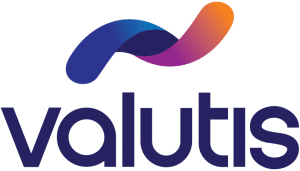Is your team stuck in endless debates trying to reach a decision everyone agrees on? You’re not alone. Many well-intentioned teams value collaboration and shared leadership, but when consensus becomes the goal at any cost, decision-making can grind to a halt.
If you’ve ever watched a productive meeting unravel the moment someone says, “I’m not sure there isn’t a better way…” and felt the energy drain from the room, you know exactly what I mean. But here’s the good news: you don’t have to choose between efficiency and participation.
I see it all the time: well-meaning teams who want shared leadership but get stuck in endless loops of indecision.
Teams who value participation, shared leadership and consensus, but take forever to make decisions.
In theory – it is hard to beat when you involve team members in decision making; get input on issues and maximize ownership through inclusion. The quality, commitment and impact of these decisions is quite high.
In practice – I see people who want to put a bullet in their head if another minute is wasted trying to get everyone on board, aligned and in agreement! Death by consensus is all too real in conference rooms around the world.
I believe you can achieve the best of both worlds – consensus and efficiency. To get it, you need to stop thinking that Consensus:
- Requires unanimous opinions
- Makes everyone giddy with excitement about the decision made
- Indicates everyone sees the issue the same way
- Means everyone got what they wanted
Instead, you need a broader appreciation of consensus. Think of it as an alignment. Appreciate that you can fully back (and implement) decisions different from that which you might select.
By broadening the range of consensus – you maintain the fundamental agreement and gain speed of processing and deciding.
A tool I use in facilitating is The 6 Levels of Consensus. In brief, it provides Team Members with a broader base of responses when determining ‘consensus.’ No longer are you limited to “yes” or “no.” In this model, there are 6 options when asked for consensus on an idea or decision. They include:
The 6 Levels of Consensus Tool:
- I can say an unqualified “yes” to the decision. I am satisfied that the decision is an expression of the wisdom of the group.
- I find the decision perfectly acceptable.
- I can live with the decision; I’m not especially enthusiastic about it.
- I do not fully agree with the decision, however I have registered my view about it. I do not choose to block the decision and am willing to support the decision because I trust the wisdom of the group.
- I do not agree with the decision and feel the need to stand in the way of this decision being accepted.
- I feel that we have no clear sense of unity in the group. We need more dialogue and debate before consensus can be reached.
Team members who responding with 1 through 4 are in agreement and ready to move forward. Only those who deliberately respond with a ‘5’ are choosing to stop consensus. Doing so is certainly his/her right.
The beauty of the tool is you start with the individual/s who rated it a 5. You listen to his/her perspective and work to find an acceptable decision (or they may choose to stay in disagreement, yet trust the wisdom of the team – rating #4).
It takes some practice, but when adopted as the norm, it is a great tool. Follow the instructions below and put it to work with your team.
Do the Work:
- After a period of discussion and debate, a group member calls for consensus by stating the conclusion as he/she proposes.
- After the statement/decision/conclusion has been voiced, group members specify the number best describing their individual level of consensus. (see above.)
- If all members are at level 4 or higher, consensus has been achieved, discussion ends and the group transitions to the next item of business.
- If anyone has a level 5 or 6, the dialogue continues until someone else calls for consensus again.
I think you should take the initiative to make your team better – bring the tool to the next meeting and give it a try – Do we have consensus?
Want to uncover the hidden behaviors that slow your team down? The CORE Assessment is a great place to start. It reveals how your team members naturally operate and where misalignment may be creeping in.



